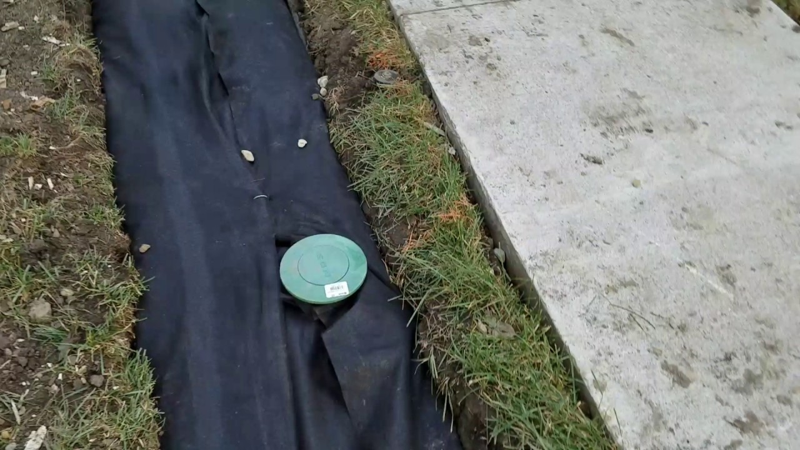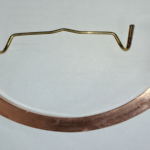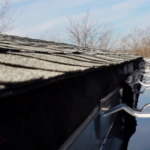Installing gutters is a necessary home improvement task that helps protect your home from water damage. While gutters are not the most glamorous of home features, they are essential in keeping your home in good condition. Gutters can be installed by a professional or as a do-it-yourself project. Either way, it is important to take the time to properly install gutters to ensure that they will function properly.
To install gutters, you will need a ladder, a level, a drill, gutter brackets, gutter sealant, and either pre-cut gutters or gutters that you will need to cut to size. You will also need to determine the pitch of your roof so that you can install the gutters at the proper angle.
Once you have all of your materials, you can begin the installation process. Start by attaching the gutter brackets to the fascia board of your home using the drill. Make sure that the brackets are level before moving on. Next, cut the gutters to size, if necessary, and then fit them into the brackets. Use the gutter sealant to seal any joints or seams in the gutters.
What is the proper way to install gutters?
There is no one-size-fits-all answer to this question, as the proper way to install gutters will vary depending on the specific circumstances of your home. However, there are some general tips that can help you ensure that your gutters are installed properly.
First, it is important to make sure that the gutters you select are the right size for your home. Gutters come in a variety of sizes, and if you select a size that is too small, they will not be able to effectively collect and channel rainwater. Conversely, if you select a size that is too large, the gutters will be more likely to sag and may even cause damage to your home’s fascia.
Once you have selected the proper size of gutters, you will need to install them at the correct height. The gutters should be installed so that they are slightly tilted towards the downspout, which will help ensure that water flows properly through the system. Additionally, the gutters should be installed so that they are level across the entire length of the home, as this will help to prevent water from pooling in any one area.
Finally, it is important to ensure that the gutters are properly secured to your home. Gutters can be attached to your home using a variety of methods, but it is important to make sure that they are securely fastened so that they can properly do their job.
What should you not do when installing gutters?
There are a few things you should avoid doing when installing gutters, as they can result in sub-optimal performance or even damage to the gutters themselves. One thing to avoid is over-tightening the screws or nails that secure the gutters to the fascia board. This can cause the gutters to warp or become misaligned. Additionally, avoid using gutter sealants or adhesives, as these can cause the gutters to become brittle and more susceptible to damage. Finally, make sure to properly clean and flush the gutters before use, as any debris or leaves left in the gutters can cause clogs.
How do you install PVC gutters?
- The first step is to cut the PVC gutter to the desired length.
- Next, you will need to install the end caps on each end of the gutter.
- Once the end caps are in place, you can now install the brackets that will hold the gutter in place.
- After the brackets are installed, you can now place the gutter on the brackets and secure it in place.
- Once the gutter is secured, you can now install the downspouts.
- Finally, you can now install the gutterscreen on top of the gutter to keep debris from entering the system.
What is the correct slope for gutters?
There is no definitive answer to this question as the slope of gutters can vary depending on the specific needs of the home or building. However, a common slope for gutters is between 1/8 and 1/4 inch per foot. This slope allows for proper drainage of water while also preventing leaves and other debris from clogging the gutters.
Can I install gutters myself?
You could probably install gutters yourself if you are feeling particularly handy, but it is not recommended. Professional installers have the experience and equipment to do the job quickly and efficiently. They also know how to troubleshoot any potential problems that might arise during the process.
Is installing gutters easy?
No, installing gutters is not easy. It requires careful measuremenst and precision to cut the gutters to the correct size and then attaching them securely to the roof and house. If they are not installed correctly, they can leak and cause water damage to the house.
Should gutters be installed before or after roof?
There is no definitive answer to this question as it depends on a number of factors, such as the type of roof and gutter system you have, the climate in your area, and the preference of the roofing contractor. In general, however, it is advisable to install gutters after the roof has been installed and the roofing materials have had a chance to cure. This will help to ensure that the gutters are properly installed and will not be damaged by the weight of the roofing materials.
Final Word
If you’re thinking about installing gutters on your home, there are a few things you need to know. First, you’ll need to decide what type of gutters you want. There are several different types of gutters to choose from, including plastic, aluminum, and copper. Second, you’ll need to measure your home’s eaves and choose the right size gutters. Third, you’ll need to install the gutters yourself or hire a professional to do it for you. fourth, you’ll need to regularly clean your gutters to prevent them from getting clogged.
















